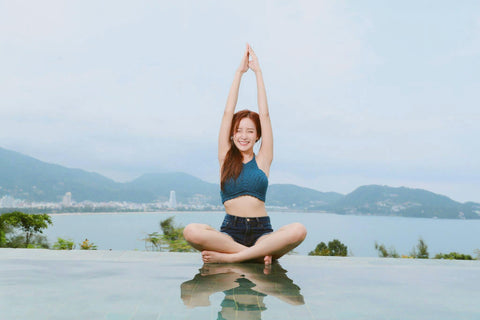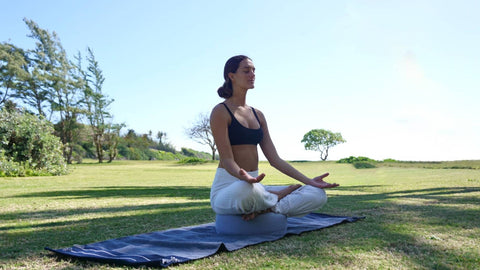Starting your journey with yoga can be both exciting and overwhelming. With numerous styles, poses, and practices to explore, it’s essential to find the right approach that suits your needs as a beginner. This guide will help you navigate the basics of yoga for beginners, ensuring you have a solid foundation to build upon.
1. Understanding Yoga
Yoga is an ancient practice that combines physical postures, breathing exercises, and meditation. It aims to harmonize the body, mind, and spirit, promoting overall wellness. For beginners, yoga offers a gentle introduction to these elements, making it accessible and beneficial for everyone, regardless of age or fitness level.
2. Benefits of Yoga for Beginners
Before diving into specific practices, it’s important to understand the numerous benefits yoga can offer:
- Improved Flexibility and Strength: Regular practice helps in stretching and strengthening muscles, leading to better flexibility and muscle tone.
- Stress Relief: Yoga incorporates breathing techniques and meditation that help reduce stress and promote relaxation.
- Enhanced Mental Clarity: Meditation and focused breathing improve concentration and mental clarity.
- Better Posture: Yoga emphasizes proper alignment, which can improve your posture over time.
- Overall Well-being: Yoga promotes a sense of inner peace and balance, enhancing your overall quality of life.
3. Choosing the Right Style
Yoga comes in various styles, each with its unique focus and benefits. As a beginner, it’s crucial to choose a style that aligns with your goals and fitness level:
- Hatha Yoga: Ideal for beginners, Hatha Yoga focuses on basic poses and slow-paced stretching.
- Vinyasa Yoga: This style involves a series of poses that flow smoothly from one to another, paired with breath control.
- Iyengar Yoga: Known for its emphasis on alignment, Iyengar Yoga uses props like blocks and straps, making it beginner-friendly.
- Restorative Yoga: This gentle form of yoga focuses on relaxation and stress relief, using props to support the body in restful poses.
4. Essential Yoga Poses for Beginners
Here are some foundational poses that every beginner should start with:
- Mountain Pose (Tadasana): A standing pose that improves posture and balance.
- Downward-Facing Dog (Adho Mukha Svanasana): A foundational pose that stretches the entire body.
- Child’s Pose (Balasana): A resting pose that helps in relaxation and stretching the back.
- Warrior I (Virabhadrasana I): A standing pose that strengthens the legs and improves focus.
- Cat-Cow Pose (Marjaryasana-Bitilasana): A gentle flow between two poses that warms up the spine and relieves tension.
5. Tips for a Successful Start
To make your yoga practice effective and enjoyable, keep these tips in mind:
- Start Slow: Don’t rush into complex poses. Begin with simple postures and gradually progress.
- Listen to Your Body: Pay attention to how your body feels and avoid pushing yourself too hard.
- Consistency is Key: Practice regularly, even if it’s just for a few minutes each day.
- Find a Qualified Instructor: A good instructor can guide you through the poses correctly and safely.
- Create a Comfortable Space: Set up a quiet, comfortable space at home where you can practice without distractions.
6. Practicing Yoga Safely
Safety is paramount when starting yoga. Here are some precautions to keep in mind:
- Warm Up Properly: Always start with a warm-up to prepare your body for the poses.
- Use Props: Don’t hesitate to use yoga blocks, straps, or blankets to support your practice.
- Avoid Overstretching: Be mindful of your limits and avoid pushing yourself into poses that cause pain.
- Stay Hydrated: Drink plenty of water before and after your practice to stay hydrated.
7. Incorporating Breathing Techniques
Breathing is a fundamental aspect of yoga. For beginners, focusing on breath control can enhance your practice:
- Ujjayi Breath: This involves breathing in and out through the nose with a slight constriction at the back of the throat, creating a soothing sound.
- Belly Breathing: Place one hand on your belly and inhale deeply, feeling your belly rise. Exhale slowly, feeling it fall.
8. Embracing the Mental Aspect
Yoga is not just a physical practice; it’s also about cultivating a positive mindset:
- Meditation: Spend a few minutes each day meditating to calm your mind and improve focus.
- Mindfulness: Practice being present in each moment, both on and off the mat.
9. Joining a Yoga Community
Connecting with other beginners can provide motivation and support. Consider joining a local yoga studio or online community where you can share your experiences and learn from others.
Gayo: Your Eco-Friendly Yoga Partner

At Gayo, we understand the importance of starting your yoga journey with the right tools. Our eco-friendly yoga products are designed to enhance your practice while being kind to the planet. Whether you’re looking for a sturdy Cork Yoga Mat or a comfortable Organic Cotton Yoga Bolster Set, Gayo has you covered. Explore our range of sustainable yoga products at eamuovpu.top and #AwakenwithGayo.
Embarking on your yoga journey can be transformative. By following this guide, you’ll be well on your way to reaping the many benefits of yoga for beginners. Namaste!


